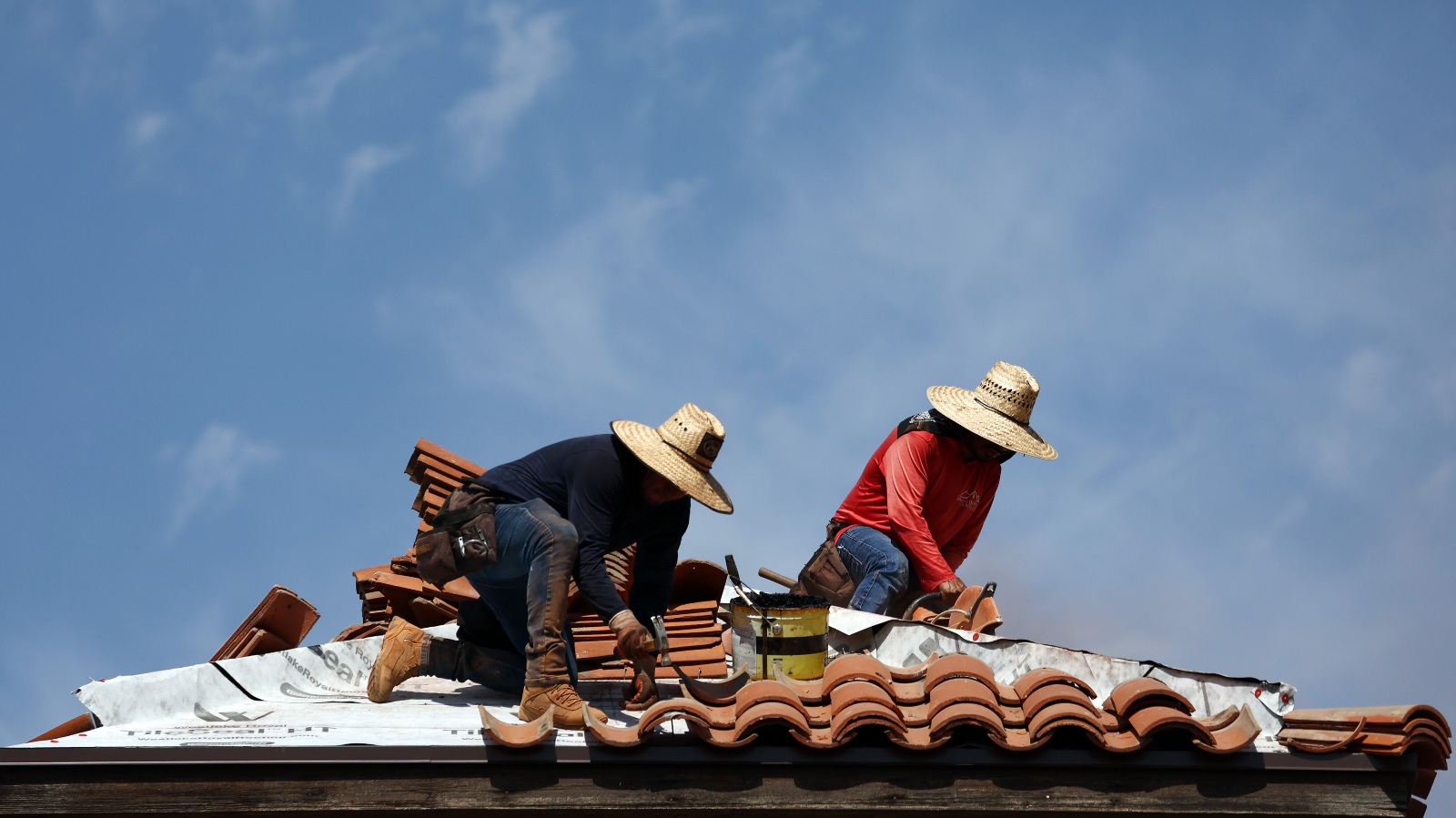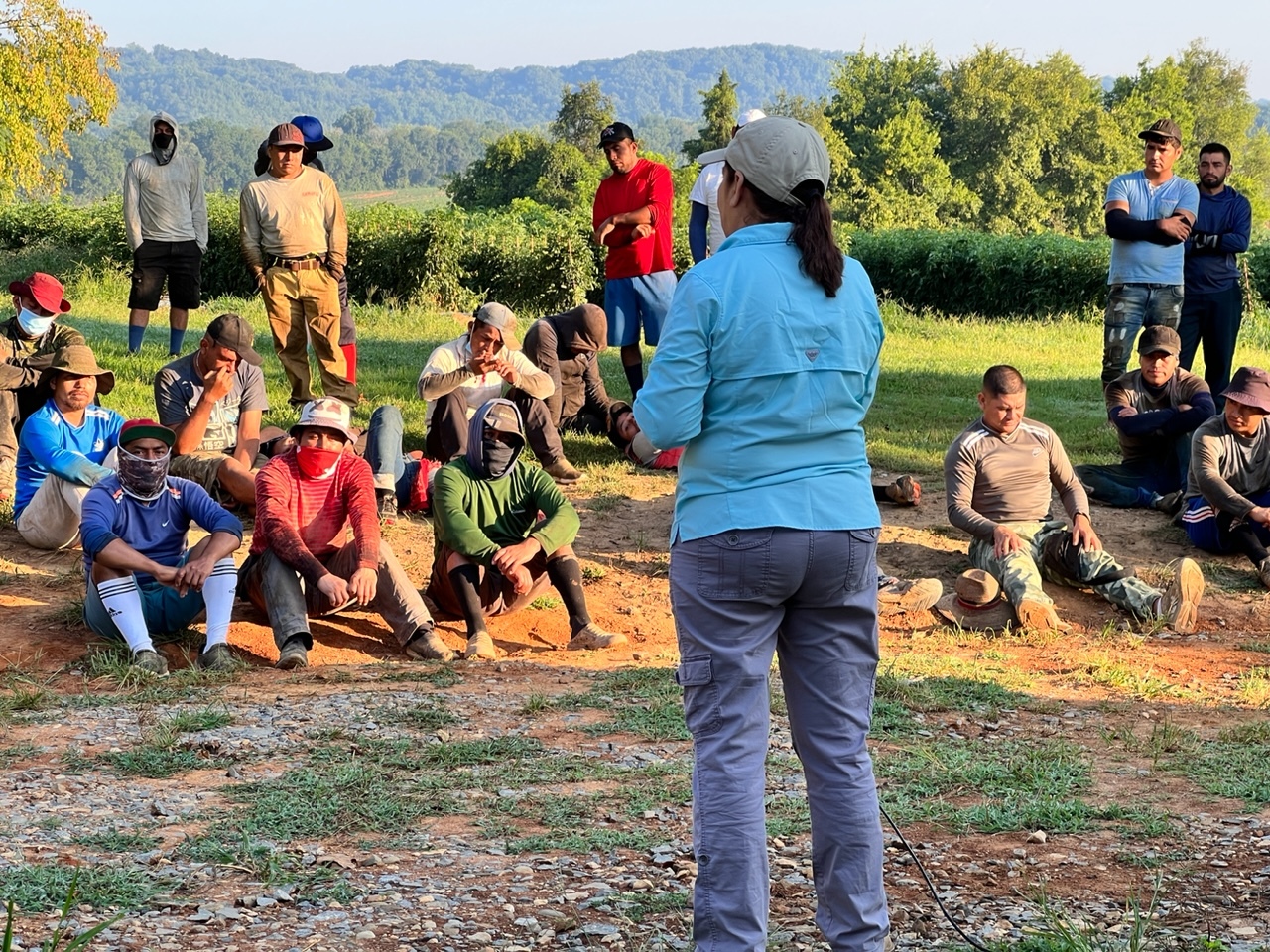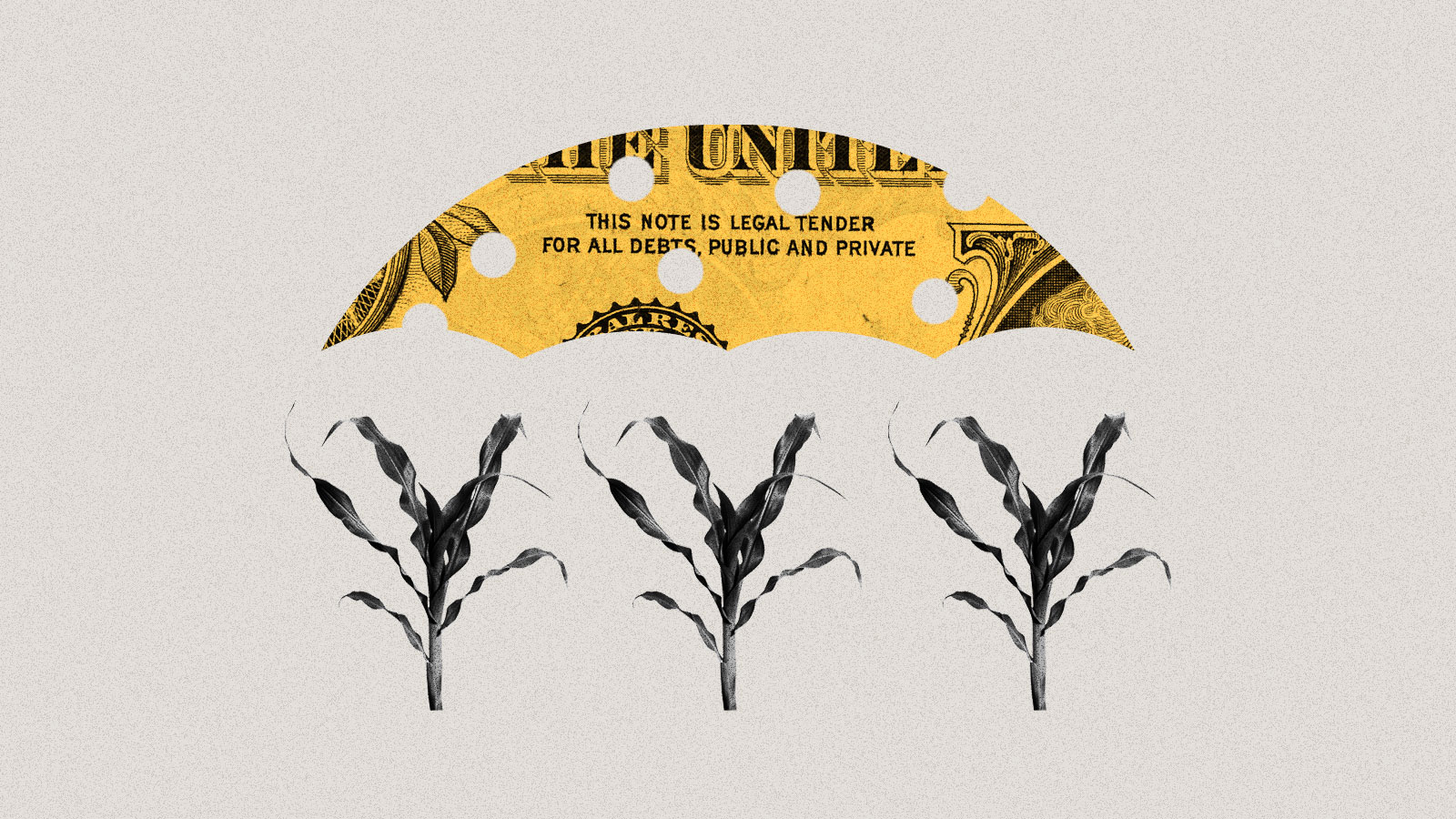Could saving farms help conserve Florida’s coveted Corridor lands?
Editor’s note: In partnership with the Florida Trident, Central Florida Public Media (previously 90.7 WMFE), and WGCU Public Media, Oviedo Community News is taking a deep look at what the Florida Wildlife Corridor does and doesn’t mean for our community. Below is CFPM’s second installment in a special, statewide collaboration called: “Preserve or Develop? The Race Against Time to Protect Florida’s Wildlife Corridor.”
Nesting fox squirrels, deer, gopher tortoises and bald eagles are just some examples of the wildlife you might see on any given day at the nearly 700-acre Evans Ranch in Flagler County, just outside the borders of the Florida Wildlife Corridor.
“We don’t need a zoo; we have our own wildlife habitat out here,” laughs Jane Evans Davis, who co-manages Evans Farms with her brother, Geno Evans.
The Evanses’ roughly 2,000-acre agricultural operation includes the Flagler County ranch as well as Anastasia Gold Caviar, their aquaculture facility, or fish farm, just over the Volusia County line. On the Flagler side are timberlands and the Evanses’ cow-calf operation.

Like many family farmers, the Evanses’ interest in agriculture spans generations. They say their father bought the land back in the 1980s, when it was just “a blank slate.”
“Dad’s love for the outdoors, and love for the property … I think that’s what’s led us down this path,” Geno Evans said.
Now, the Evanses each hope some of their children, members of the next generation, will want to carry on the family’s farming tradition — and protect this rural land. That’s why they say they decided to protect their Flagler County ranchland with Florida’s first agricultural conservation easement, granted in 2009 through the state’s Rural and Family Lands Protection Program (RFLPP).
Typically, conservation easements restrict how land can be used. But in Florida, agricultural conservation easements allow land to still be used for farming, and stay in private hands, while providing tax benefits for landowners.
“It was a decision we were making for the future generations of the family,” Evans said. “We still can do any agricultural venture that we want.”

“Florida’s Wildlife and Water Corridor”
Not all land is safe from future development within the 18-million-acre area designated by a 2021 state law as the Florida Wildlife Corridor.
Eight million acres of Corridor lands are “opportunity areas,” lacking conservation protections — which don’t come from the Corridor Act itself, but rather from a range of different programs, run by state, local, federal and private entities. The Corridor essentially serves as a marketing/outreach campaign, directing attention toward what are scientifically identified as Florida’s most important lands to conserve.
Much of the unprotected Corridor includes “working lands,” currently used for either ranching or silviculture/timber production, according to Tom Hoctor, director of the Center for Landscape Conservation Planning (CLCP) at University of Florida.
And by 2070, much of the state’s farmland could be paved over and developed: including more than half of the unprotected Corridor, according to Agriculture 2040/2070, an analysis co-published earlier this year by Hoctor’s team and 1000 Friends of Florida.
For Hoctor, those findings create a sense of urgency.
“We have to protect working lands,” Hoctor said. “If we’re gonna protect the Florida Wildlife Corridor, if we’re gonna close all those gaps, working agricultural lands are essential to accomplishing that goal.”

More broadly, even beyond the Florida Wildlife Corridor’s imagined boundaries, farmland in Florida stands to play a significant role in building climate resilience, according to the 2040/2070 report.
“Often, depending on how it’s managed, and where it is, it can be very similar to natural ecosystems,” Hoctor said.
As large, rural landscapes, ranchlands and timberlands like the Evanses’ often double as conservation land, Hoctor says: providing ecosystem services, like wildlife habitat and flood storage from natural wetlands. Wetlands and sandy uplands alike can also help filter and clean water, another reason why Hoctor says it’s so important to protect land in the Corridor.
“It might as well be called Florida’s [Wildlife and] Water Corridor,” Hoctor said. “It’s just as important to protecting the state’s water resources as it is to protecting panthers or bears or other species.”
Research published by the UF Water Institute in late 2022 supports that idea, at least in part. Specifically, a fully-connected Corridor would provide many water benefits for wetlands and rivers, according to the report. But it wouldn’t help as much with groundwater recharge for the Floridan Aquifer, a massive underground system of rocks and sediment supplying about 90% of the state’s drinking water.
Just over a third of Florida’s highest-priority areas for aquifer recharge are located within the Wildlife Corridor, says Joshua Daskin, director of conservation for Archbold Biological Station, which commissioned the UF report.
“The areas that are best for aquifer recharge are the really high, dry, sandy soils. And those are also the places that we prefer for agriculture — for row crops in particular — and for building our homes and businesses,” Daskin said.
That’s why there aren’t so many of those areas within the Corridor, Daskin says: because there aren’t as many left to conserve. “A lot of them have already been developed,” he said.
Still, aquifer recharge areas that are within the Corridor, along with surface watersheds, could benefit from protecting all the Corridor’s “opportunity areas” from development, according to the UF Water Institute study. That includes agricultural lands — with one important caveat.
“The degree of protection provided to Florida’s watersheds and aquifer recharge areas will be dependent on how the [Florida Wildlife Corridor’s] conserved lands are managed,” the report states.
For working lands in the Corridor, the report specifically recommends conservation easements that encourage sustainable land and water management practices.
Farming and water pollution in Florida
Historically and today, agriculture is critical to Florida’s culture and economy. But as an industry, it’s also a major environmental polluter. Together, livestock waste and fertilizer runoff make agriculture a major source of pollution to Central Florida’s freshwater basins, according to available data from Florida’s Department of Environmental Protection (FDEP).
Excessive nitrogen from fertilizer is the main water quality problem for the Outstanding Florida Springs (OFS) currently classified as impaired, or polluted, by FDEP. Of all 30 designated OFS in Florida, 24 are considered impaired.
Florida Springs Council (FSC) Executive Director Ryan Smart says it’s critically important to address Florida’s agricultural water pollution. Statewide, agriculture is responsible for 70 percent of nitrate pollution in springs, according to an analysis FSC published in 2021.
“No matter what we do on the ground, it affects our springs. And whatever happens in our springs, it’s not only the springs and the rivers, but it’s our drinking water,” Smart said.

Soil and plants will absorb some fertilizer before it seeps into our groundwater supply, but not all of it, Smart said, adding that Florida’s frequent rainstorms also complicate the problem.
“You get a big rainstorm that comes in after the fertilizer’s been put down, and it just flushes all of that fertilizer straight into the aquifer,” Smart said. “And once it’s in the aquifer, it is very hard to get that pollution out.”
That’s why Smart says it’s so important to minimize agricultural pollution before it has a chance to contaminate Florida waters. He says that means land conservation must be part of the solution.
“To protect a spring, you can’t just put a fence around the spring,” Smart said. “The health of our springs is determined by the land use all around them … you have to protect forests, you have to have smart development, you have to have smart agriculture.”
Florida law requires farmers within impaired water basins to use Best Management Practices, or BMPs, to improve water quality. But Smart says there’s a problem: farmers using BMPs enjoy an automatic “presumption of compliance” with water quality standards, meaning no water testing is regularly conducted to ensure those BMPs are working.
Staff with Florida’s Department of Agriculture and Consumer Services (FDACS) do visit farms with checklists to verify farmers are using BMPs. So far this fiscal year, as of mid-April, FDACS made 528 such “implementation verification” visits in Orange, Osceola, Polk, Volusia and Flagler counties, including 15 in Flagler.
But FDACS says FDEP is statutorily responsible for water quality sampling, and FDEP didn’t answer questions about whether it tests water quality to ensure BMPs are working.
“We have a presumption of compliance with water quality standards for farmers doing things that actually don’t improve water quality,” Smart said.
“If you don’t study something, [and] you’re not gonna set the practices to where they’re not environmentally harmful, then it doesn’t make sense to have our environmental rules based on them.”

Incentivizing sustainable agriculture
Smart recognizes agriculture serves a purpose in Florida, and doesn’t want to put farmers out of business; he just wants to see agriculture do less damage to the Florida environment he loves. But he says that won’t happen all on its own, without regulatory oversight — and incentives for sustainable farming practices.
“We need to keep the land in private hands, we just need that land to be sustainable,” Smart said. “We need to be paying farmers for the environmental benefits and services that they are creating when they make these changes.”
Echoing that sentiment, Hoctor says he wants to see Florida do more to incentivize sustainable agriculture, including by paying farmers for the ecosystem services they provide. He’d also like to see more funding dedicated to Florida’s RFLPP, the program protecting the Evanses’ easement, and the state’s other flagship land protection program, Florida Forever, which buys up land outright for conservation.
“If you look at the Florida Wildlife Corridor law, it talks about market-based and incentives-based approaches to conserving the Florida Wildlife Corridor,” Hoctor said. “Well, I think funding Florida Forever and Rural And Family Lands is essential to accomplish that goal.”
Hoctor advocates for $250 million a year, per program, to get the job done. It will require a “multi-decadal commitment” of that kind of funding, he says, to protect Florida’s most valuable ecological lands.
But it’s worth it, Hoctor says, including to protect agricultural land, which he says is almost always much more “conservation compatible” than land that’s already been developed.
“There’s almost a one to one relationship,” between agricultural and conservation lands, Hoctor said.
“Yes, they’re not pristine. Yes, they’re not entirely natural systems. But they’re really important for conservation,” Hoctor said. “And they can continue to be managed for these low intensity uses, and stay really important for conservation.”

For their part, the Evanses say they prioritize sustainable agricultural practices. Geno Evans takes issue with the narrative that farmers are responsible for Florida’s water pollution, pointing out, there aren’t any residential BMPs that non-farmers have to follow.
“We [as farmers] kinda live and die by our BMPs,” Evans said. “We manage our pollution, our runoff.”
The Evanses also say they use sustainable water management practices, thanks to their “100% closed” levee system, complete with lift stations, sand filters and a reservoir that can hold 60 million gallons of water. The system allows the Evanses to drain all their aquaculture tanks on the Volusia County side, where they raise sturgeon for caviar eggs; then, treat the water and recycle it.
“During drought, we’re one of the few farmers that actually can use water to do our fields,” Jane Evans Davis said. And she says the levee system also helps recycle nutrients through the farm, instead of letting them flow into any surface waters.
“We’re a pretty rare operation,” Evans Davis said. “Most people don’t build this large of a retention area to hold all their water and keep it on their farm.”

The idea behind Florida’s RFLPP, the program that set up the Evanses’ conservation easement, is to “protect natural resources, not as the primary purpose.”
Instead, the program is designed to “ensure sustainable agricultural practices and reasonable protection of the environment without interfering with agricultural operations in such a way that could put the continued economic viability of these operations at risk.”
Nationally, there are about 7 percent fewer farms now than in 2017, based on the most recent USDA Census of Agriculture. But Flagler County, where the Evans Ranch is, lost 23 percent of its farms in the same time period.
“It’s tragic, how many farmlands are disappearing,” Jane Evans Davis said. “We’re losing so many opportunities every day to protect sensitive lands with agriculture.”
They worry people don’t understand or appreciate how much of their food supply comes from farms. “If we don’t feed ourselves, who’s gonna feed us?” Evans said.

The Evanses hope to see more agricultural easements like theirs help farmers keep farming in Florida, versus selling off their land completely. Evans doesn’t like seeing farms outright disappear like that:whether it’s to the state or rich developers, who can almost always pay farmers more, and move sales along more quickly than the state can.
“I’m in favor of the Wildlife Corridor, for sure,” Evans said. “But I’m not in favor of pushing agriculture out of the way for that … If they displace the agricultural part of it, I think they’re missing the whole point to the conservation.”
And the Evanses hope their own agricultural conservation easement can help sustain the family’s farming tradition for generations to come. Evans says his kids both enjoy working on the ranch, and Evans Davis’ daughter, a trained fisheries biologist, loves the fish farm.
“I want to make sure that this farm is healthy, safe and productive for my grandkids, and their grandkids,” Evans Davis said. “You have corporations that care, right? But do they care as much as a family that cares about that property that they want their future generations to live on?”
The post Could saving farms help conserve Florida’s coveted Corridor lands? appeared first on Oviedo Community News.




